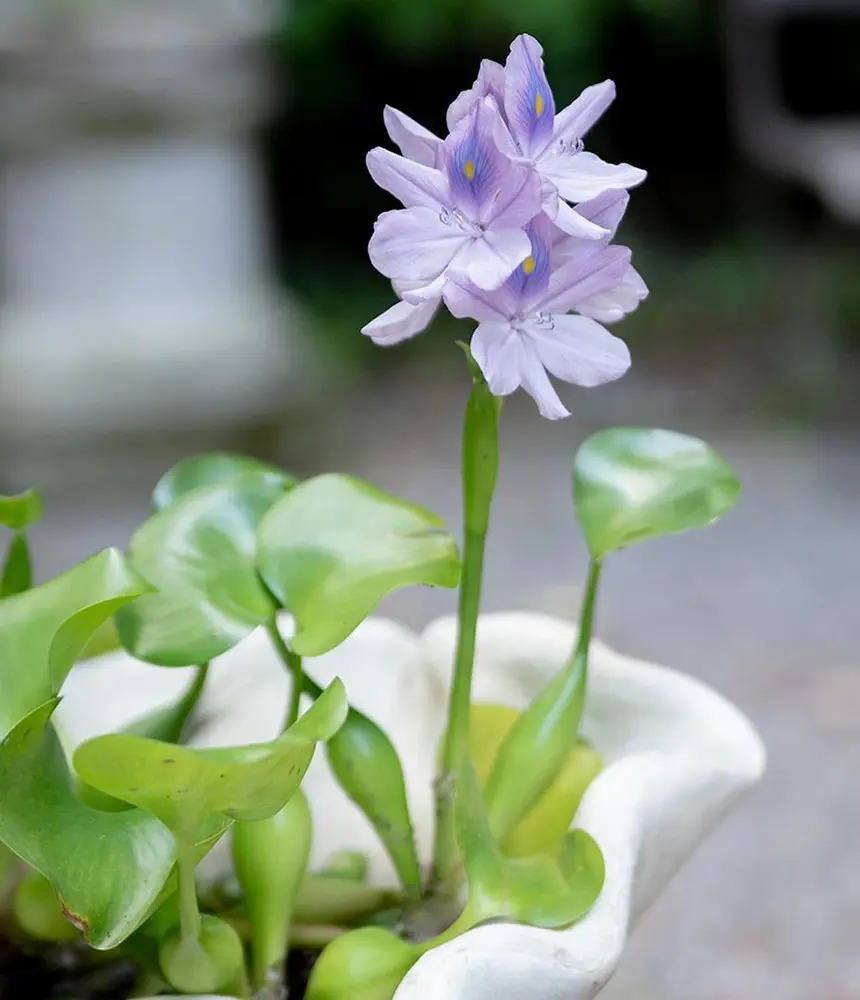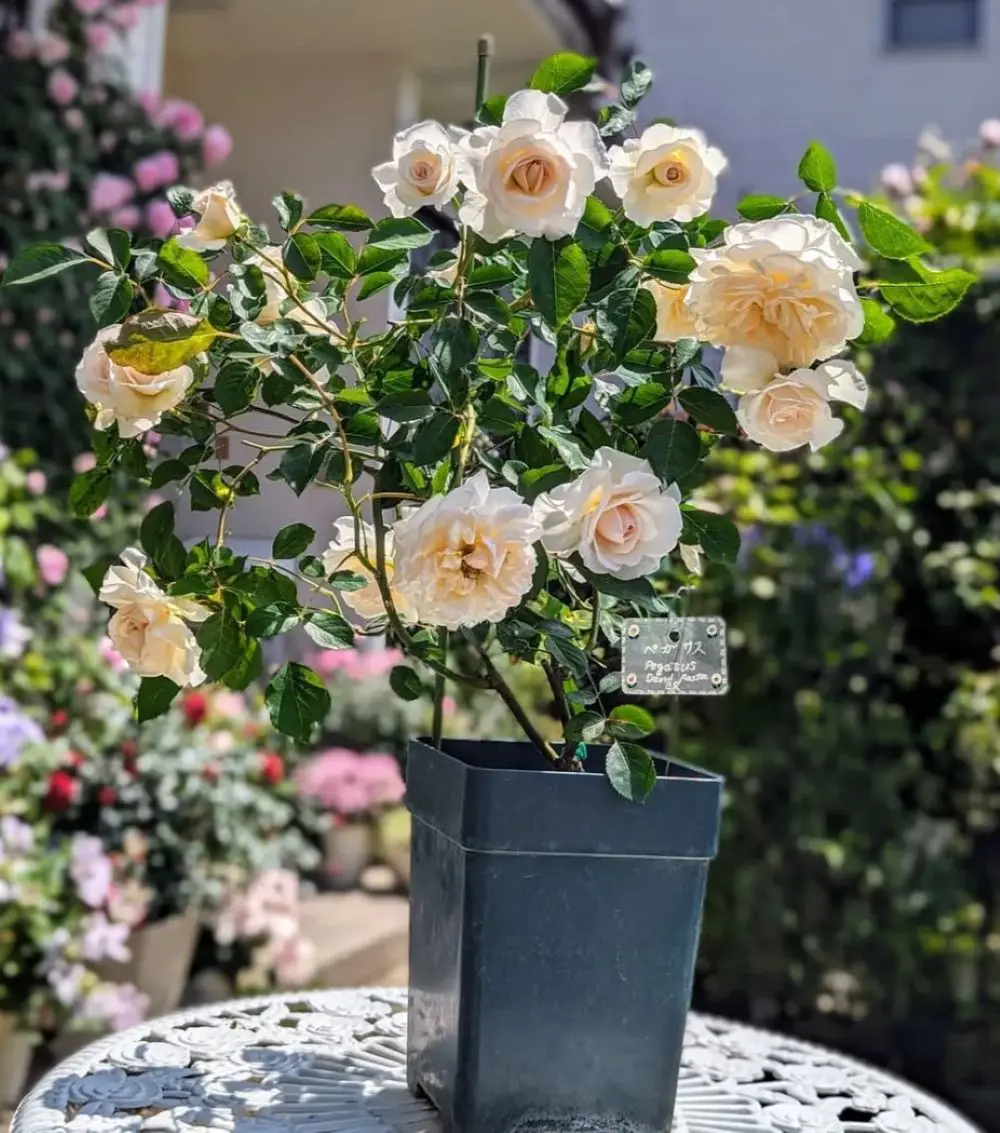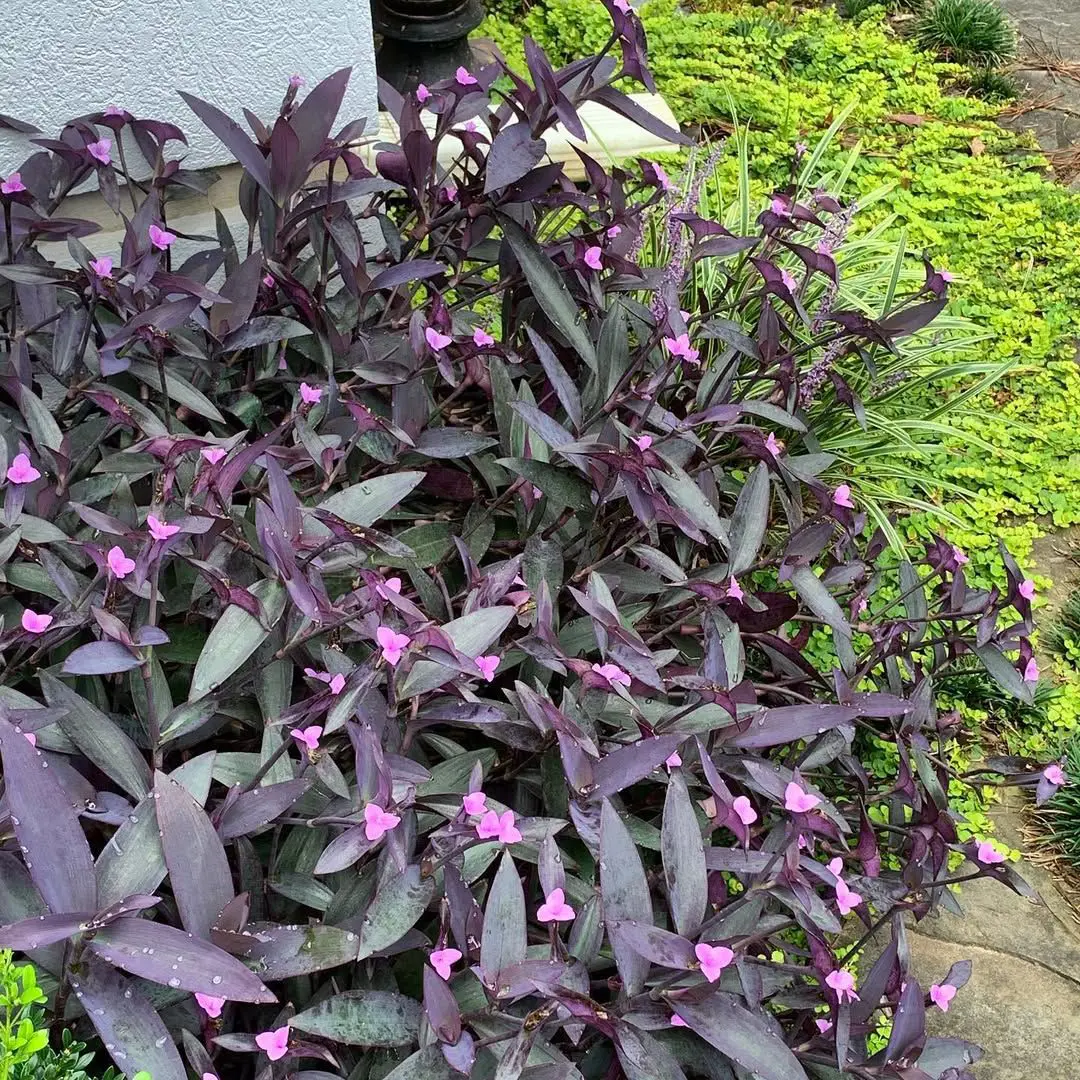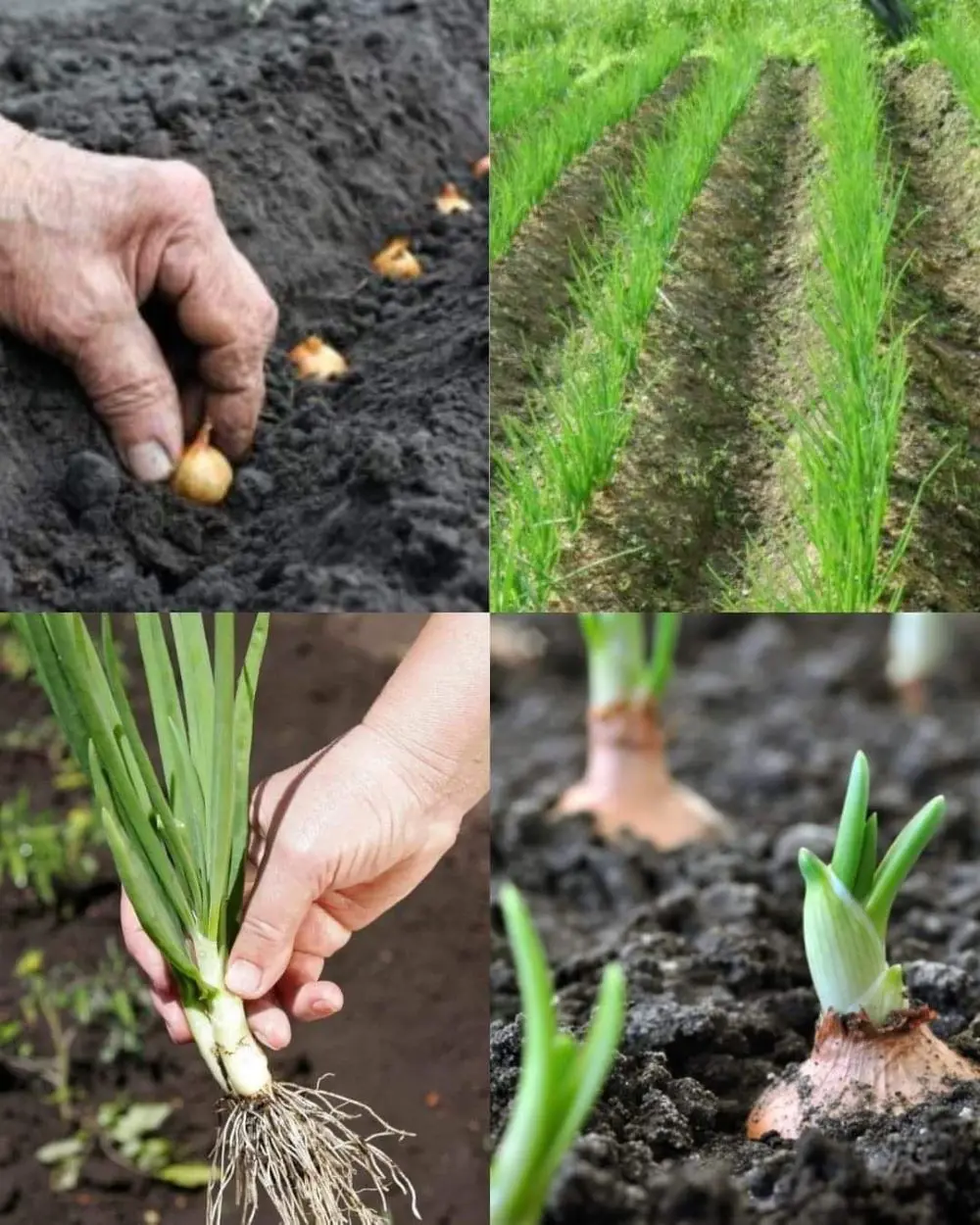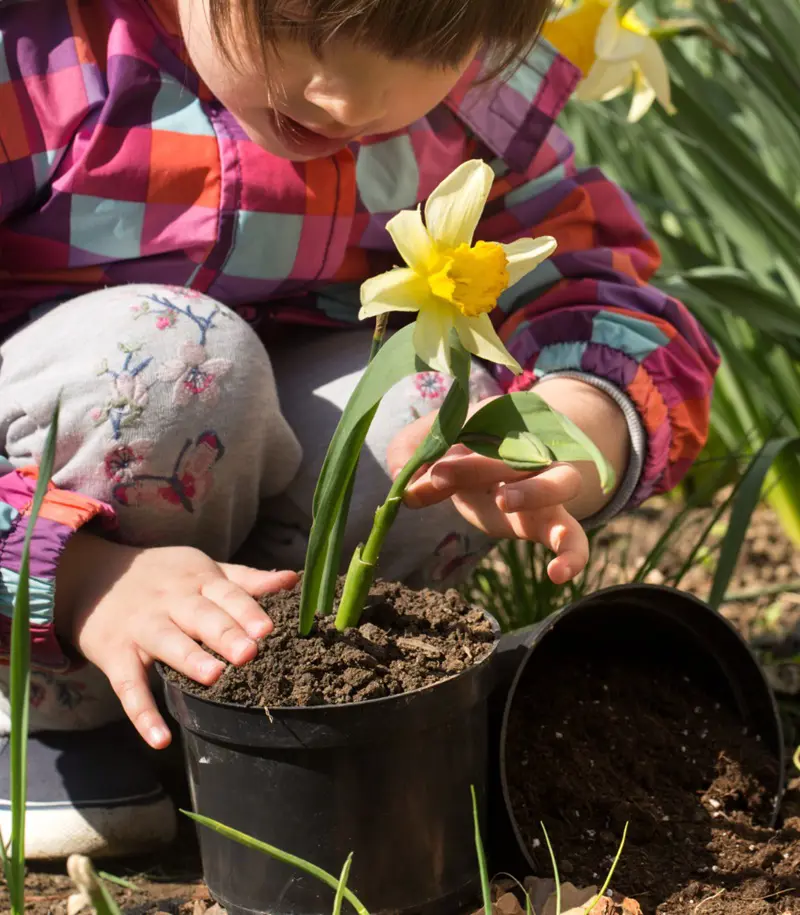Growing and caring for water hyacinth (Eichhornia crassipes) can transform any aquatic landscape into a vibrant, lush haven. Known for its stunning purple flowers and buoyant green leaves, water hyacinth is not only a striking addition to ponds and water gardens but also plays a role in water purification and habitat creation.
However, while its beauty and benefits are undeniable, managing water hyacinth requires careful consideration due to its rapid growth and potential to become invasive.
This guide will provide comprehensive insights into successfully cultivating and maintaining water hyacinths, ensuring your aquatic garden remains a picturesque and balanced ecosystem.
Growing Water Hyacinth
Growing water hyacinth (Eichhornia crassipes) can be a delightful addition to any aquatic garden or pond, providing not only aesthetic beauty but also contributing to water quality. Here’s a step-by-step guide on how to grow water hyacinth successfully:
1. Selecting the Right Location: Water hyacinth thrives in full sun to partial shade and prefers still or slow-moving water bodies such as ponds, lakes, and marshes. Ensure the water is consistently warm, ideally between 65°F to 85°F (18°C to 29°C).
2. Planting Water Hyacinth:
-
Container Planting: If you're growing water hyacinth in a container, choose a wide container with shallow water (about 6 inches deep). Place the roots gently in the water or let them float on the surface.
-
Direct Planting: For planting directly in a pond or water garden, gently place the roots or let the plants float on the water surface, leaving enough space between plants for them to spread.
3. Watering and Nutrient Requirements: Water hyacinth is a heavy feeder and thrives in nutrient-rich water. If your water body lacks nutrients, consider adding aquatic plant fertilizer tablets. Monitor the water quality to prevent over-fertilization, which can lead to excessive growth.
4. Maintenance:
-
Pruning: Trim back excessive growth regularly to prevent overcrowding. This also encourages airflow and light penetration, which is beneficial for plant health.
-
Cleaning: Remove any dead or decaying plant material promptly to maintain water clarity and prevent nutrient buildup.
5. Winter Care (for Cold Climates): In regions with cold winters, water hyacinths may not survive freezing temperatures. Consider bringing plants indoors or treating them as annuals, replanting new ones each spring.
6. Pest and Disease Management:
-
Pests: Monitor for pests such as aphids, which can occasionally affect water hyacinths. Use aquatic-safe pesticides as needed.
-
Diseases: Watch for fungal infections and treat them promptly with appropriate fungicides to prevent spreading.
7. Legal Considerations: Check local regulations before introducing water hyacinth into natural water bodies. In some areas, it is considered invasive and may require permits or restrictions.
8. Environmental Impact:
-
Control Growth: Since water hyacinth can become invasive, monitor its growth carefully and prevent its spread to natural water bodies.
-
Beneficial Effects: Despite its invasiveness potential, water hyacinth helps improve water quality by absorbing excess nutrients and providing habitat for aquatic organisms.
Following these steps, you can successfully grow a water hyacinth and enjoy its beauty while maintaining a balanced aquatic ecosystem. Regular monitoring and proactive care will ensure your water garden flourishes with these stunning aquatic plants.
Caring for Water Hyacinth
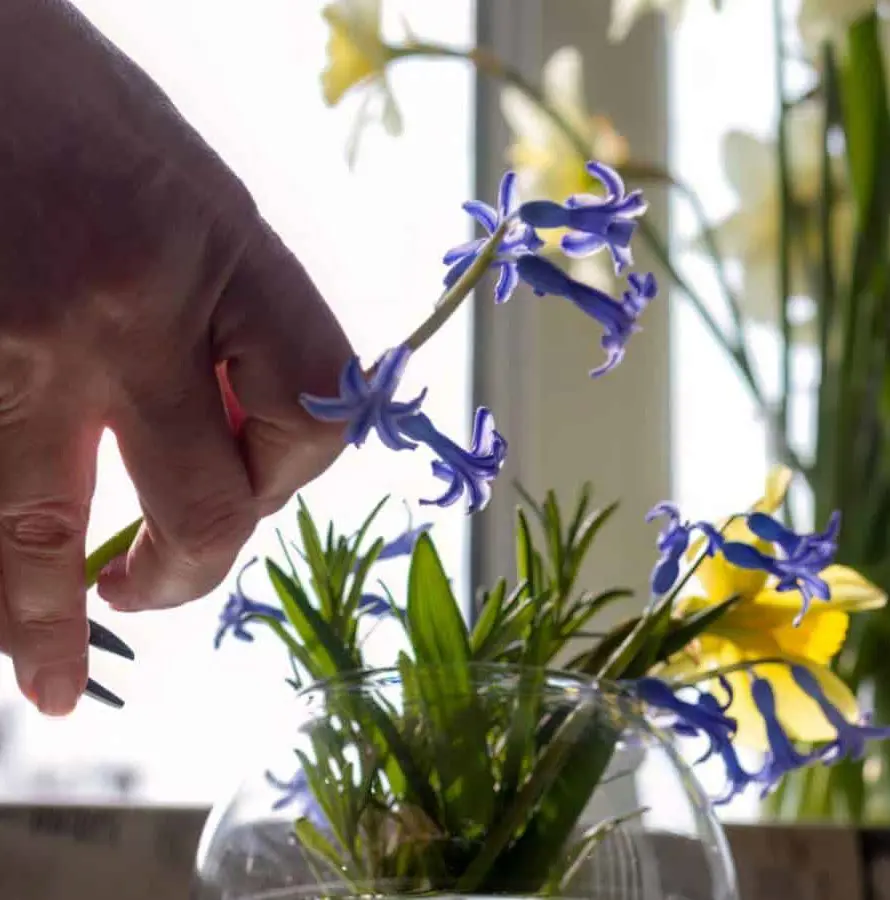
Caring for water hyacinth (Eichhornia crassipes) involves several key aspects to ensure its health and prevent it from becoming invasive. Here’s a detailed guide on how to care for water hyacinth:
1. Optimal Growing Conditions
-
Sunlight: Water hyacinth thrives in full sun to partial shade. Ensure it receives at least 6-8 hours of sunlight daily for optimal growth.
-
Water Temperature: It prefers warm water temperatures, ideally between 65°F to 85°F (18°C to 29°C). Avoid placing it in areas with fluctuating temperatures, especially if they drop below 50°F (10°C).
-
Water Depth: Plant water hyacinth in water that is at least 6 inches deep. It can grow in deeper water, but the roots should be able to reach the bottom for stability.
2. Planting and Propagation
-
Container Planting: Use wide containers with shallow water if planting in pots. Ensure the roots are submerged, and the leaves float freely on the water surface.
-
Direct Planting: In ponds or natural water bodies, gently place water hyacinth where the roots can reach the sediment. Leave enough space between plants to prevent overcrowding as they multiply.
-
Propagation: Water hyacinth reproduces quickly through runners. Separate daughter plants from the main plant periodically to prevent overcrowding. These can be replanted or shared with others.
3. Nutrient Requirements
-
Fertilization: Water hyacinth is a heavy feeder and benefits from nutrient-rich water. Use aquatic plant fertilizer tablets sparingly, following manufacturer instructions, to avoid excessive growth and nutrient imbalance.
-
Nutrient Uptake: It helps improve water quality by absorbing excess nutrients like nitrogen and phosphorus, which can reduce algae growth and clarify the water.
4. Maintenance
-
Pruning: Regularly trim back overgrown or yellowing leaves to maintain plant health and prevent overcrowding. Use clean scissors or pruning shears to cut near the base of the plant.
-
Thinning: Remove excess plants periodically to prevent overcrowding. This helps maintain airflow and prevents the formation of dense mats that can block sunlight and oxygen.
-
Cleaning: Remove dead or decaying plant material promptly to prevent nutrient buildup and potential water quality issues. Skim the surface of the water to collect debris and fallen leaves.
5. Pest and Disease Management
-
Pests: Monitor for pests such as aphids and caterpillars, which can affect water hyacinth. Use safe aquatic pesticides or natural predators to manage pest populations.
-
Diseases: Watch for signs of fungal infections, which can occur in humid conditions or stagnant water. Maintain good water circulation and avoid overcrowding to minimize disease risk.
6. Winter Care (Cold Climates)
-
Indoor Storage: In regions with cold winters, consider overwintering water hyacinth indoors in a heated greenhouse or as a houseplant. Ensure it receives adequate sunlight and moisture during this period.
-
Annual Planting: Treat water hyacinth as an annual in colder climates, replanting new specimens each spring after the danger of frost has passed.
7. Environmental Considerations
-
Invasive Potential: Due to its rapid growth and ability to form dense mats, water hyacinth can become invasive in natural water bodies. Monitor its growth and control its spread to prevent disruptions to native ecosystems.
-
Legal Restrictions: Check local regulations before introducing water hyacinth into natural water bodies. In some areas, it is considered invasive and may be restricted or prohibited.
8. Community and Environmental Awareness
-
Education: Educate others about the benefits and risks of water hyacinth to promote responsible cultivation and management practices.
-
Community Involvement: Encourage community participation in monitoring and controlling invasive species in local water bodies to protect native habitats and biodiversity.
Regular monitoring and proactive maintenance will ensure your water garden remains healthy and balanced.
Avoiding Common Issues

Avoiding common issues when caring for water hyacinth involves proactive management and understanding potential challenges. Here are key tips to help you maintain healthy water hyacinth plants:
1. Overcrowding and Maintenance
-
Issue: Water hyacinths can rapidly multiply and overcrowd water surfaces, leading to reduced oxygen levels and blocking sunlight to other aquatic plants.
-
Prevention:
- Regular Thinning: Periodically thin out excess plants to maintain spacing and prevent overcrowding. Remove new shoots or daughter plants as they develop to control population growth.
- Pruning: Trim back overgrown leaves and flowers regularly to prevent dense mats from forming. Use clean scissors or shears to cut near the base of the plant.
2. Nutrient Imbalance
-
Issue: Over-fertilization or nutrient-rich water can cause excessive growth of water hyacinths, leading to dense mats that degrade water quality and disrupt the ecosystem balance.
-
Prevention:
- Monitor Nutrient Levels: Test water quality regularly to ensure nutrient levels are within optimal ranges. Use fertilizers sparingly and only as needed, following manufacturer instructions.
- Balance Nutrient Inputs: Consider natural methods like adding compost or organic matter to enhance soil fertility without relying solely on chemical fertilizers.
3. Winter Care in Cold Climates
-
Issue: Water hyacinths are sensitive to cold temperatures and may not survive freezing conditions, especially in colder climates.
-
Prevention:
- Indoor Storage: Overwinter water hyacinth indoors in a heated greenhouse or as a houseplant to protect it from frost. Ensure it receives adequate sunlight and moisture during the winter months.
- Annual Planting: Treat water hyacinth as an annual in colder regions, replanting new specimens each spring after the risk of frost has passed.
4. Pest and Disease Management
-
Issue: Aphids, caterpillars, and fungal diseases can affect water hyacinth, compromising its health and growth.
-
Prevention:
- Monitor Regularly: Inspect plants regularly for signs of pests or diseases. Early detection allows for prompt treatment and prevents widespread infestations.
- Use Safe Controls: Utilize aquatic-safe pesticides or natural predators to manage pest populations effectively. Avoid harsh chemicals that can harm beneficial organisms and water quality.
5. Legal and Environmental Considerations
-
Issue: Water hyacinth is considered invasive in many regions and can disrupt native ecosystems if not properly managed.
-
Prevention:
- Know Local Regulations: Check local laws and regulations before planting water hyacinths in natural water bodies. Obtain necessary permits and follow guidelines to prevent its spread.
- Containment Measures: Use physical barriers or controlled environments to prevent water hyacinths from escaping into natural waterways.
6. Community and Education
-
Issue: Lack of awareness about the invasive potential and proper care of water hyacinth can lead to unintended environmental impacts.
-
Prevention:
- Educate Others: Share information about the benefits and risks of water hyacinths with neighbors, community groups, and local authorities.
- Promote Responsible Practices: Encourage responsible planting, monitoring, and management of water hyacinths to minimize its impact on native habitats and biodiversity.
By implementing these preventive measures and staying vigilant in your care routine, you can effectively avoid common issues associated with water hyacinth cultivation. This proactive approach ensures that your aquatic environment remains healthy, balanced, and aesthetically pleasing for years to come.
FAQs
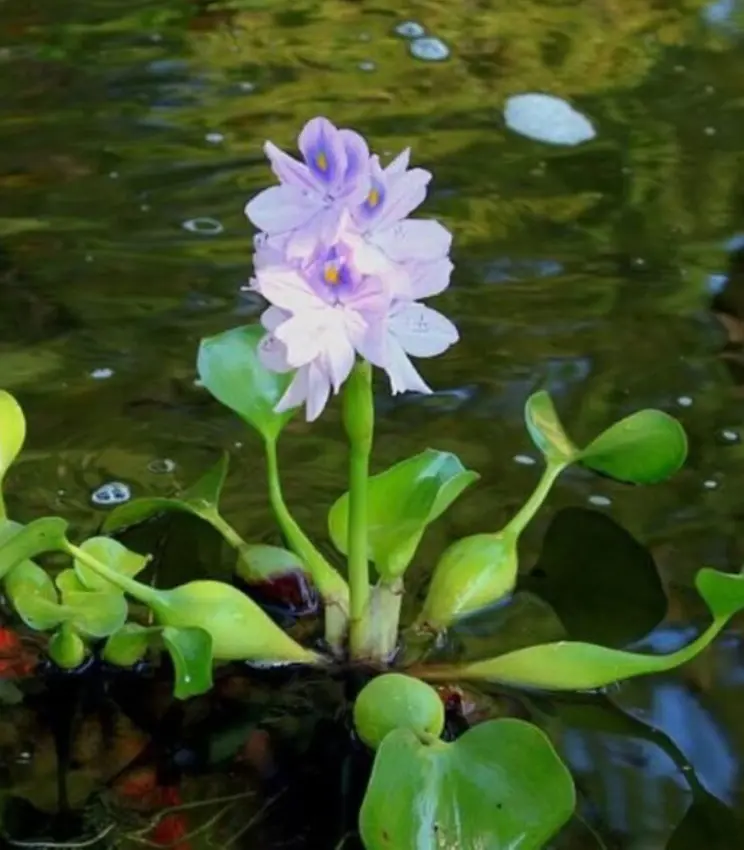
1. What are the ideal conditions for growing water hyacinths?
Water hyacinth thrives in warm climates with full sun to partial shade. It prefers water temperatures between 65°F to 85°F (18°C to 29°C) and grows best in still or slow-moving water bodies such as ponds, lakes, or marshes.
2. How do you plant water hyacinth?
You can plant water hyacinths either in containers or directly in ponds:
- Container Planting: Use wide containers with shallow water (about 6 inches deep). Place the roots gently in the water or let the plants float on the surface.
- Direct Planting: Place rooted plants in ponds or water bodies where the roots can reach the sediment. Ensure adequate spacing to prevent overcrowding.
3. How do you propagate water hyacinth?
Water hyacinth reproduces primarily through runners. These are horizontal stems that extend across the water surface, producing daughter plants. To propagate, simply separate these daughter plants from the main plant and replant them in suitable locations.
4. What should I do to maintain water hyacinth?
Maintenance involves regular pruning, thinning, and monitoring:
- Pruning: Trim back overgrown leaves and flowers to prevent dense mats from forming.
- Thinning: Remove excess plants periodically to maintain spacing and prevent overcrowding.
- Monitoring: Check for pests, diseases, and nutrient levels regularly to ensure plant health and water quality.
5. How do you protect water hyacinths in cold climates?
In colder regions, water hyacinth is sensitive to freezing temperatures:
- Indoor Storage: Overwinter plants indoors in a heated greenhouse or as houseplants.
- Annual Planting: Treat water hyacinth as an annual, replanting new specimens each spring after the frost risk has passed.
6. Are there legal considerations when growing water hyacinth?
Yes, it's important to check local regulations:
- Invasive Potential: Water hyacinth can be invasive in some regions, leading to restrictions or prohibitions on its cultivation and propagation.
- Permits: Obtain necessary permits before introducing water hyacinth into natural water bodies to prevent unintended environmental impacts.
